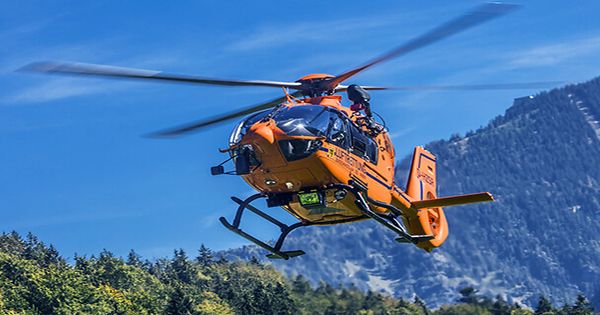“A glider is an airplane whose engine fails. A helicopter with a broken engine is a brick.” In a tweet from 2015, Neil deGrasse Tyson, the famed astrophysicist and general scientific person, roundly and extensively corrected. In a popular video refuting the remark, YouTuber Destin Sandlin of the channel SmarterEveryDay gathered the help of several helicopter experts to show the notion of autorotation — in other words, he climbed in a helicopter and turned off the engine in the middle of a flight to see what would happen.
Sandlin is not the only one prepared to put his confidence in physics in this way, as risky as it may sound. Interesting Engineering has unearthed a video of another helicopter pilot demonstrating how autorotation may save the day in the event of a mid-air engine failure — and this time, the chopper is flying high in the British Columbia Mountains. Fortunately, for everyone involved, this was a planned event: “This is merely a simulation and was done under close supervision, but it depicts exactly what would happen,” according to the video description.
“This is looking pretty great,” the pilot says as the helicopter approaches the landing strip – but then the engine fails, “mayday mayday mayday!” What exactly do they do? We will let you view the video but Warne: they are just fine. The pilot slows the speed sufficiently to land the helicopter using autorotation after gliding for a period at 80 knots – around 150 kilometers per hour or 92 miles per hour.
What exactly is autorotation? It is really “one of the most essential movements” that aspiring helicopter pilots must learn, according to Tim McAdams of the Aircraft Owners and Pilots Association (AOPA). In essence, it refers to a helicopter that is flying without an engine (but with the rotors still spinning — otherwise, you are in huge danger.)
It may be daunting to a non-pilot. It demands rapid reactions and precise control; if you respond too slowly or the main rotor slows down too much, the vehicle will lose control and fall out of the sky like Neil deGrasse Tyson’s brick. Allowing the rotor to spin too rapidly, on the other hand, might destroy the blades, which is terrible news when you are hundreds of feet in the air with no functional motor.
However, it does not appear to be a huge difficulty to skilled helicopter pilots: most of the issues trainees encounter are nerve-related, and many believe other maneuvers, like hovering and are considerably more difficult.
It is easy to imagine autorotation is a piece of cake when you listen to Pilot Yellow — he never loses his calm. He finds a flat sandy landing spot on the River Stave, explaining how landing on the mountain rocks would be perilous, and carefully brings the helicopter down to Earth. Therefore, if you have ever considered taking a helicopter flight but were worried about what would happen if the engine stopped, be assured that the pilot is prepared?
















